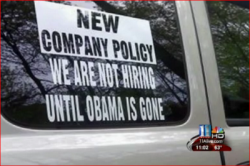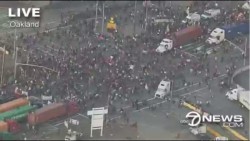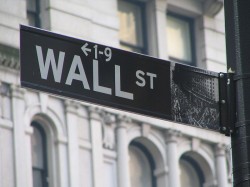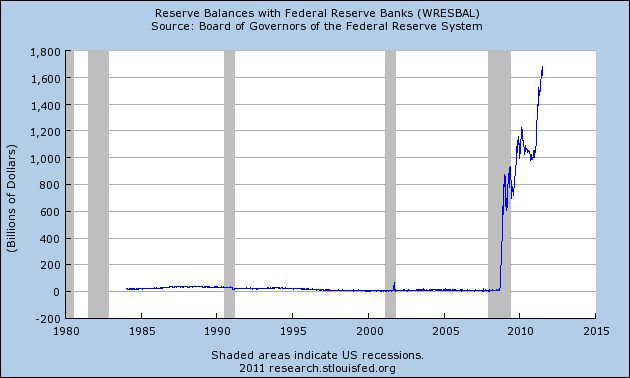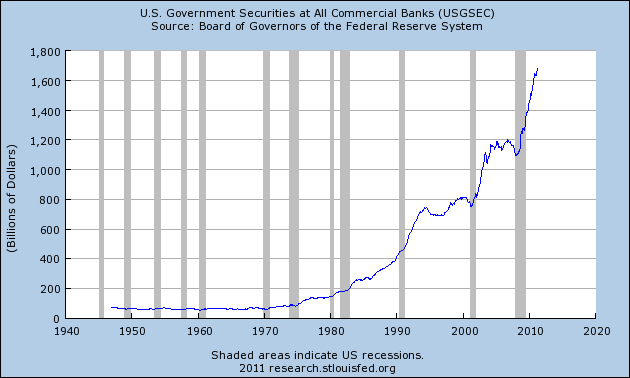 What you are about to read should absolutely astound you. During the last financial crisis, the Federal Reserve secretly conducted the biggest bailout in the history of the world, and the Fed fought in court for several years to keep it a secret. Do you remember the TARP bailout? The American people were absolutely outraged that the federal government spent 700 billion dollars bailing out the “too big to fail” banks. Well, that bailout was pocket change compared to what the Federal Reserve did. As you will see documented below, the Federal Reserve actually handed more than 16 trillion dollars in nearly interest-free money to the “too big to fail” banks between 2007 and 2010. So have you heard about this on the nightly news? Probably not. Lately Bloomberg has been reporting on some of this, but even they are not giving people the whole picture. The American people need to be told about this 16 trillion dollar bailout, because it is a perfect example of why the Federal Reserve needs to be shut down. The Federal Reserve has been actively picking “winners” and “losers” in the financial system, and it turns out that the “friends” of the Fed always get bailed out and always end up among the “winners”. This is not how a free market system is supposed to work.
What you are about to read should absolutely astound you. During the last financial crisis, the Federal Reserve secretly conducted the biggest bailout in the history of the world, and the Fed fought in court for several years to keep it a secret. Do you remember the TARP bailout? The American people were absolutely outraged that the federal government spent 700 billion dollars bailing out the “too big to fail” banks. Well, that bailout was pocket change compared to what the Federal Reserve did. As you will see documented below, the Federal Reserve actually handed more than 16 trillion dollars in nearly interest-free money to the “too big to fail” banks between 2007 and 2010. So have you heard about this on the nightly news? Probably not. Lately Bloomberg has been reporting on some of this, but even they are not giving people the whole picture. The American people need to be told about this 16 trillion dollar bailout, because it is a perfect example of why the Federal Reserve needs to be shut down. The Federal Reserve has been actively picking “winners” and “losers” in the financial system, and it turns out that the “friends” of the Fed always get bailed out and always end up among the “winners”. This is not how a free market system is supposed to work.
According to the limited GAO audit of the Federal Reserve that was mandated by the Dodd-Frank Wall Street Reform and Consumer Protection Act, the grand total of all the secret bailouts conducted by the Federal Reserve during the last financial crisis comes to a whopping $16.1 trillion.
That is an astonishing amount of money.
Keep in mind that the GDP of the United States for the entire year of 2010 was only 14.58 trillion dollars.
The total U.S. national debt is only a bit above 15 trillion dollars right now.
So 16 trillion dollars is an almost inconceivable amount of money.
But some other dollar figures have been thrown around lately regarding these secret Federal Reserve bailouts. Let’s take a look at them and see what they mean.
$1.2 Trillion
A recent Bloomberg article made the following statement….
The $1.2 trillion peak on Dec. 5, 2008 — the combined outstanding balance under the seven programs tallied by Bloomberg — was almost three times the size of the U.S. federal budget deficit that year and more than the total earnings of all federally insured banks in the U.S. for the decade through 2010, according to data compiled by Bloomberg.
The $1.2 trillion figure represents the peak outstanding balance on these loans, not the total amount of all the loans. On December 5, 2008 the “too big to fail” banks owed this much money to the Federal Reserve. Many of them could not pay these short-term loans back right away and had to keep rolling them over time after time. Each time a short-term loan got rolled over that represented a new loan.
$7.7 Trillion
Bloomberg is reporting that the Federal Reserve had made a total of $7.77 trillion in financial commitments to the big banks by the end of March 2009….
Add up guarantees and lending limits, and the Fed had committed $7.77 trillion as of March 2009 to rescuing the financial system, more than half the value of everything produced in the U.S. that year.
But as mentioned above, a one-time limited GAO audit of the Federal Reserve that was mandated by the Dodd-Frank Wall Street Reform and Consumer Protection Act covered an even broader time period and revealed even more bailout loans.
According to the GAO audit, $16.1 trillion in secret loans were made by the Federal Reserve between December 1, 2007 and July 21, 2010. The following list of firms and the amount of money that they received was taken directly from page 131 of the GAO audit report….
Citigroup – $2.513 trillion
Morgan Stanley – $2.041 trillion
Merrill Lynch – $1.949 trillion
Bank of America – $1.344 trillion
Barclays PLC – $868 billion
Bear Sterns – $853 billion
Goldman Sachs – $814 billion
Royal Bank of Scotland – $541 billion
JP Morgan Chase – $391 billion
Deutsche Bank – $354 billion
UBS – $287 billion
Credit Suisse – $262 billion
Lehman Brothers – $183 billion
Bank of Scotland – $181 billion
BNP Paribas – $175 billion
Wells Fargo – $159 billion
Dexia – $159 billion
Wachovia – $142 billion
Dresdner Bank – $135 billion
Societe Generale – $124 billion
“All Other Borrowers” – $2.639 trillion
This report was made available to all the members of Congress, but most of them have been totally silent about it. One of the only members of Congress that has said something has been U.S. Senator Bernie Sanders.
The following is an excerpt from a statement about this audit that was taken from the official website of Senator Sanders….
“As a result of this audit, we now know that the Federal Reserve provided more than $16 trillion in total financial assistance to some of the largest financial institutions and corporations in the United States and throughout the world”
So where is everyone else?
Why aren’t leading Republicans and leading Democrats crying bloody murder over this report?
This scandal should have been front page news for months when it was revealed.
But it wasn’t.
And Guess what?
Not only did the Federal Reserve give 16.1 trillion dollars in nearly interest-free loans to the “too big to fail” banks, the Fed also paid them over 600 million dollars to help run the emergency lending program. According to the GAO, the Federal Reserve shelled out an astounding $659.4 million in “fees” to the very financial institutions which caused the financial crisis in the first place.
In addition, it turns out that trillions of dollars of this bailout money actually went overseas. According to the GAO audit, approximately $3.08 trillion went to foreign banks in Europe and in Asia.
So why were our dollars being used to bail out foreign banks while tens of millions of American families were deeply suffering?
That is a very good question.
Also, it is important to remember that many of these bailout loans were made at below market interest rates, and this enabled many of these financial institutions to rake in huge profits.
According to a recent Bloomberg article, the big banks brought in an estimated $13 billion by taking advantage of the Fed’s below-market rates….
While the Fed’s last-resort lending programs generally charge above-market interest rates to deter routine borrowing, that practice sometimes flipped during the crisis. On Oct. 20, 2008, for example, the central bank agreed to make $113.3 billion of 28-day loans through its Term Auction Facility at a rate of 1.1 percent, according to a press release at the time.
The rate was less than a third of the 3.8 percent that banks were charging each other to make one-month loans on that day. Bank of America and Wachovia Corp. each got $15 billion of the 1.1 percent TAF loans, followed by Royal Bank of Scotland’s RBS Citizens NA unit with $10 billion, Fed data show.
So once the financial crisis was over, were adjustments made to the financial system to make sure that this type of thing would never happen again?
Of course not.
Today, the “too big to fail” banks are larger than ever. The total assets of the six largest U.S. banks increased by 39 percent between September 30, 2006 and September 30, 2011.
So now they are more “too big to fail” than ever.
But this is what happens when we allow unelected central bank bureaucrats to run our financial system.
Most Americans do not realize this, but the truth is that the Federal Reserve is not part of the government. In fact, it is about as “federal” as Federal Express is. The Federal Reserve has admitted that they are a privately owned institution in court many times, and you can see video of a Federal Reserve employee admitting that the Federal Reserve is privately owned right here.
The Federal Reserve is an out of control monster that is throwing around trillions of dollars whenever it wants to. Nobody should be allowed to do this. Nobody should be allowed to give bailouts to banks and corporations without the express permission of the U.S. Congress and the president of the United States.
This is a point that I made in my article yesterday. The Federal Reserve decided this week that it is going to provide “liquidity support” to Europe. If the American people do not like this move, that is just too bad. We do not get a say in the matter.
Are you starting to understand why I keep pushing the idea that it is time to shut down the Federal Reserve?
Please share this information about the secret 16 trillion dollar Federal Reserve bailout with your family and your friends.
If we can get enough people to wake up, perhaps there is still time to change the direction that this country is headed.
